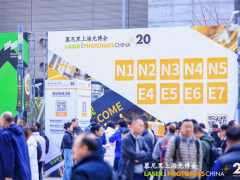自2020年油價暴跌導致破產浪潮以來,美國油氣行業在并購交易方面的態度已遠不如以前積極
今年第二季度,美國油氣并購交易同比收縮65%,減少到120億美元,由于價格波動較大,買賣雙方不愿冒險進行交易
現在,由于美國最大的天然氣生產商EQT斥資52億美元收購THQ阿帕拉契亞公司和XcL中游公司的資產,以及西迪奧礦業公司與布里格姆礦業公司的合并,美國油氣并購活動似乎再次升溫
據油價網9月10日報道,上兩次能源危機使數百家美國能源公司面臨破產的威脅,改寫了油氣行業的并購劇本。在此之前,石油和天然氣公司在價格暴跌后進行了大量激進的戰術收購或周期性收購,原因是許多不良資產價格低廉。然而,在2020年油價暴跌導致油價下跌的情況下,能源企業在進行并購交易時采取了更克制、更戰略性、更注重資產環境的方式。因此,在上一波并購浪潮變成一場收購公司的災難之后,石油巨頭的高管們有些不愿出手,也就不足為奇了。
根據能源分析公司Enverus發布的數據,由于大宗商品價格的高波動性導致買賣雙方在資產價值上發生沖突,今年第二季度美國油氣并購交易數同比收縮65%至120億美元,遠低于去年同期的348億美元。
Enverus主管安德魯·迪特馬表示:“爆發地緣政治沖突后大宗商品價格飆升,導致并購交易活動暫時陷入停滯,因為買家和賣家在資產價值上存在分歧。”
Enverus報告稱,美國私人股本公司的油氣并購交易活動在第一季度大幅增加,因為它們購買了石油公司視為其開發計劃非核心的資產。這些資產往往位于像西得克薩斯州和新墨西哥州的二疊紀盆地這樣的產油區之外。
迪特馬爾表示:“私人股本仍有足夠的資金進行交易。他們利用這一點來鎖定被上市公司標記為非核心的資產。 一旦你走出二疊紀盆地的核心地區和其他幾個關鍵地區,油氣并購交易競爭就會下降,而這些頭寸的價格通常對買家有利。盡管如此,私募股權仍是該并購交易領域的凈賣家,而且考慮到未完成投資的數量以及資金已經部署了多長時間,在可預見的未來可能仍會如此。”
盡管如此,美國油氣行業的并購交易活動依然活躍,能源行業高管仍在達成大量交易。以下是兩個更值得注意的例子。
EQT斥資52億美元收購競爭對手THQ 阿帕拉契亞公司和XcL中游公司資產
今年5月,總部位于賓夕法尼亞州匹茲堡市的美國石油和天然氣生產商EQT公布了一項計劃,通過大幅增加在阿巴拉契亞和本國頁巖盆地周圍的天然氣鉆探,以及管道和出口終端的能力,生產更多的液化天然氣(LNG),EQT表示,這不僅將提高美國的能源安全,而且有助于打破全球對煤炭以及對產能大國國家油氣的依賴。
EQT正在迅速實現其LNG的雄心,EQT 9月6日宣布,已同意以52億美元的現金和股票收購THQ 阿帕拉契亞公司的上游資產和XcL中游公司的油氣集輸和加工資產。
THQ阿帕拉契亞公司和XcL中游公司由私營天然氣生產商Tug Hill Operating所有,由Quantum能源合作伙伴公司管理的基金出資支持。EQT透露,收購的資產包括90萬英畝核心探區面積,抵消了其在西弗吉尼亞州現有的核心租賃面積,油氣日產量為8億立方英尺當量,預計在未來5年,在平均天然氣價格高于1.35美元/百萬英熱單位的情況下,將產生自由現金流。EQT還將回購計劃增加了一倍,至20億美元,并表示將把到2023年底前的債務削減計劃從25億美元提高到40億美元。
EQT一直是美國頁巖行業最活躍的交易撮合者之一,在馬塞勒斯頁巖遠景區附近收購資產和公司,以鞏固其地位。 去年,EQT以29.2億美元收購了競爭對手馬塞勒斯頁巖盆地生產商阿特拉資源公司。由于天然氣價格飆升至10多年來的最高水平,EQT首席執行官托比· 賴斯的押注今年得到了回報。
西迪奧礦業公司將以48億美元收購布里格姆礦業公司
石油和天然氣礦業和特許權公司西迪奧礦業公司將與布里格姆礦業公司進行全股票交易,企業總價值約為48億美元,從而創建美國最大的上市礦業和特許權公司之一。
這筆交易將成為今年美國石油行業最大的并購交易之一,而且交易正值油價上漲時期。
與業內其他公司一樣,西迪奧礦業公司和布里格姆礦業公司也在油價上漲的背景下實現了收入和利潤的快速增長。兩家公司的合并將使新實體實現顯著的規模經濟,并成為礦權行業的領導者。
合并后的公司將在二疊紀盆地和其他以石油為主的地區擁有互補的優質資產。合并后的公司將擁有近26萬英畝探區面積,50口凈視距井由資本充足、多樣化的勘探開發公司運營,預計第二季度凈油氣日產量為32.8萬桶油當量。
這筆交易還有望帶來每年1500萬美元的運營現金成本協同效應。
西迪奧礦業公司和布里格姆礦業公司的股東將在全面攤薄的基礎上,分別獲得合并后新公司54%和46%的股份。西迪奧礦業公司最近公布的第二季度收入為8800萬美元,凈收入為7200萬美元。
礦產所有者以特許權使用費的形式從開采到他們陸地上的石油和天然氣中獲得12.5%~20%的分成。它們不能控制開發的節奏,也不承擔鉆井作業或日常開支,這意味著它們直接從大宗商品價格高企中獲益。
李峻 編譯自 油價網
原文如下:
Mergers And Acquisitions Are Back With $10 Billion In New Deals
· The U.S. oil and gas industry has become far less aggressive in its approach to mergers and acquisitions since the 2020 oil prices crash that caused a wave of bankruptcies.
· U.S. oil and gas dealmaking contracted 65% Y/Y to $12 billion last quarter, with buyers and sellers unwilling to risk committing to deals due to high price volatility.
· Now, it seems the M&A space is heating up again as EQT spends $5.2 billion on THQ Appalachia and XcL Midstream’s assets, and Sitio Royalties merges withBrigham Minerals.
The last two energy crises that threatened hundreds of energy companies with bankruptcy have rewritten the oil and gas M&A playbook. Previously, oil and gas companies made numerous aggressive tactical or cyclical acquisitions in the wake of a price crash after many distressed assets became available on the cheap. However, the 2020 oil price crash that sent oil prices into negative territory has seen energy companies adopt a more restrained, strategic, and environment-focused approach to cutting M&A deals. It is, therefore, hardly surprising that Big Oil executives have been somewhat trigger-shy after the last M&A wave turned into a disaster for acquiring companies.
According to data released by energy analytics firm Enverus, U.S. oil and gas dealmaking contracted 65% Y/Y to $12 billion last quarter, a far cry from $34.8 billion recorded during last year’s corresponding period, as high commodity price volatility left buyers and sellers clashing over asset values.
"The spike in commodity prices that followed the war temporarily stalled M&A as buyers and sellers disagreed on the value of assets," said Andrew Dittmar, a director at Enverus Intelligence Research.
Enverus has reported that deals by private equity firms saw a significant uptick in the first quarter as they bought assets that oil companies deemed as non-core to their development plans. These assets tended to lay outside oil-prolific areas like the Permian Basin of West Texas and New Mexico.
“Private equity still has dry powder for deals. They are using this to target assets being tagged as non-core by public companies. once you step out of the core of the Permian Basin and a few other key areas, competition for deals drops, and these positions are often available at buyer-friendly price points. That said, private equity is still a net seller in the space and likely to remain so for the foreseeable future given the number of investments outstanding and how long that capital has been deployed,” Dittmar has remarked.
Still, dealmaking in the U.S. oil and gas industry remains alive and well, with energy executives still cutting significant deals. Here are the more notable ones.
EQT Corp Buys Rival THQ Appalachia and XcL Midstream’s Assets For $5.2B
Back in May, Pittsburgh, Pennsylvania oil and gas producer EQT Corporation (NYSE: EQT) unveiled a plan to produce more liquified natural gas (LNG) by dramatically increasing natural gas drilling in Appalachia and around the country's shale basins, as well as pipeline and export terminal capacity, which it said would not only boost the United States’ energy security but also help break the global reliance on coal and on countries as large producers.
Well, EQT is moving fast to realize its LNG ambitions: confirming earlier speculation, EQT Corp announced on Tuesday that it has agreed to acquire THQ Appalachia's upstream assets and XcL Midstream's gathering and processing assets for a combined $5.2B in cash and stock,
Owned by privately held gas producer Tug Hill Operating, THQ Appalachia and XcL Midstream are backed by equity commitments from funds managed by Quantum Energy Partners. CEO and founder of Quantum Energy PartnersWil VanLoh is expected to join EQT's board of directors after the merger. EQT has revealed that the assets acquired include ~90K core net acres offsetting its existing core leasehold in West Virginia, producing 800M cfe/day and expected to generate free cash flow at average natural gas prices above ~$1.35/MMBtu over the next five years. The company also doubled its buyback program to $2B and said it is increasing its debt reduction plan by year-end 2023 to $4B from $2.5B.
EQT has been one of the Shale Patch’s most active dealmakers, buying up assets and companies around the Marcellus in a bid to consolidate the company’s position. Last year, the company bought rival Marcellus producer Alta Resources for $2.92bn. EQT CEO Toby Rice’s bet has paid off this year as natural gas prices have soared to their highest levels in more than a decade.
Sitio Royalties To Merge With Brigham Minerals In $4.8 Billion Deal
Oil and gas mineral and royalty company Sitio Royalties Corp. (NYSE: STR) is headed for a merger with Brigham Minerals (NYSE: MNRL) in an all-stock deal with an aggregate enterprise value of ~$4.8B thus creating one of the largest publicly traded mineral and royalty companies in the United States.
The deal will become one of the largest tie-ups in the U.S. oil patch this year, and comes in a period of elevated oil prices.
Like the rest of the industry, Sitio and Brigham have seen both their top-and bottom-lines expand at a brisk clip on the back of rising oil prices. Combining the two companies will allow the new entity to achieve significant economies of scale and become a leader in the minerals-rights industry.
The merger will create a company with complimentary high-quality assets in the Permian Basin and other oil-focused regions. The combined company will have nearly 260K net royalty acres, 50 net line-of-sight wells operated by a well-capitalized, diverse set of E&P companies, and pro-forma Q2 net production of 32.8K boe/day.
The deal is also expected to bring in $15 million in annual operational cash cost synergies.
Sitio and Brigham shareholders will receive 54% and 46% of the combined company, respectively, on a fully diluted basis. Sitio Royalties recently reported Q2 net income of $72M on revenues of $88M.
Mineral owners receive a 12.5% to 20% cut of the oil and gas pumped on their land in the form of royalty payments. They don’t control the pace of development, but also aren’t on the hook for drilling or overhead costs, either, meaning they directly reap the benefits of high commodity prices.
免責聲明:本網轉載自其它媒體的文章及圖片,目的在于弘揚石化精神,傳遞更多石化信息,宣傳國家石化產業政策,展示國家石化產業形象,參與國際石化產業輿論競爭,提高國際石化產業話語權,并不代表本網贊同其觀點和對其真實性負責,在此我們謹向原作者和原媒體致以崇高敬意。如果您認為本站文章及圖片侵犯了您的版權,請與我們聯系,我們將第一時間刪除。







